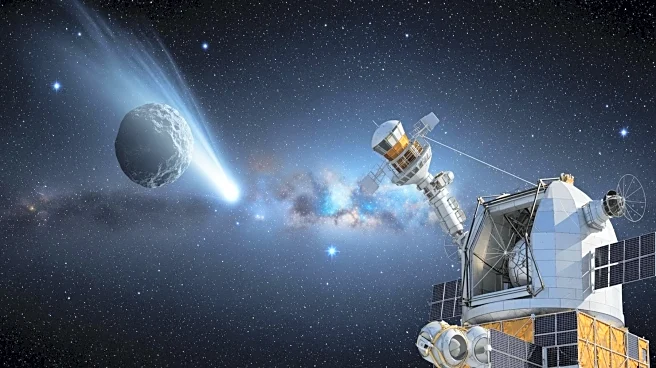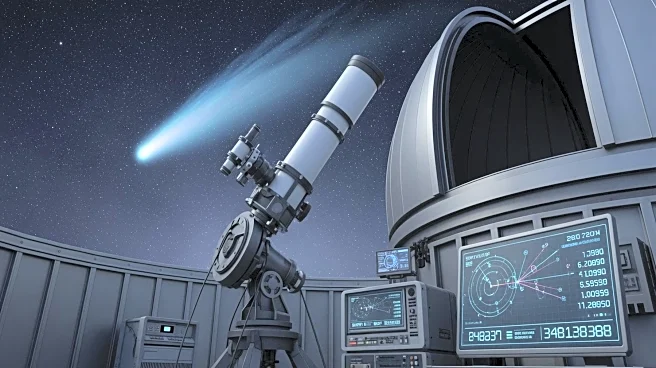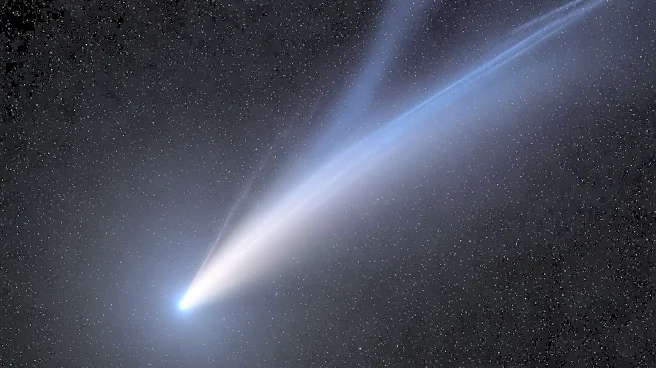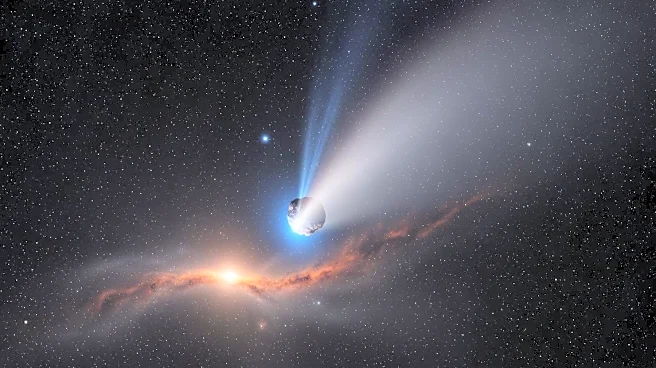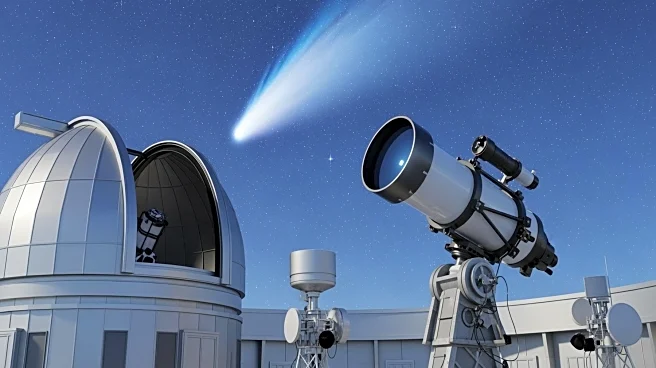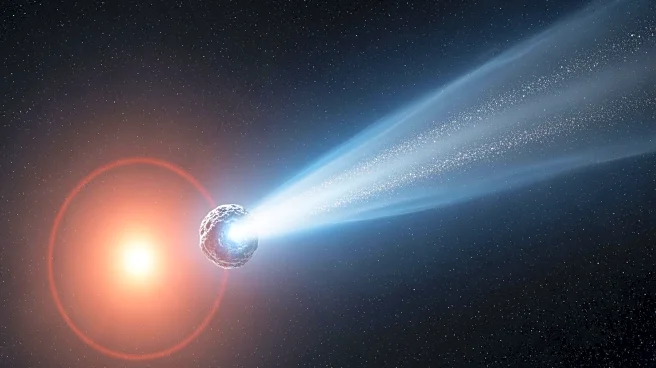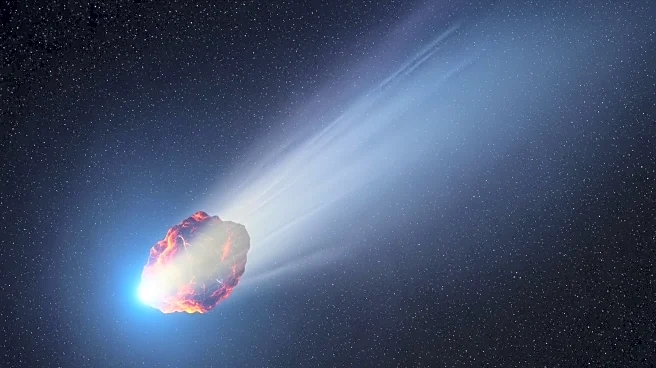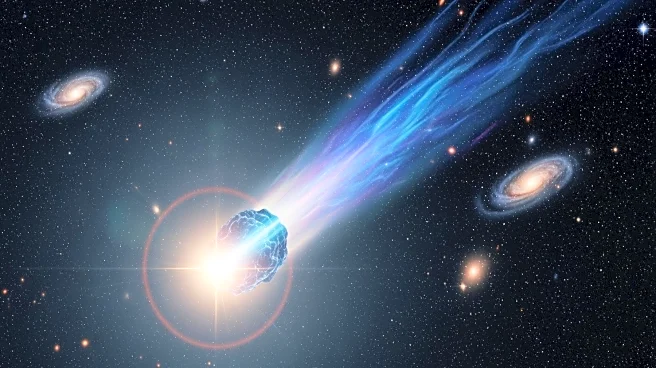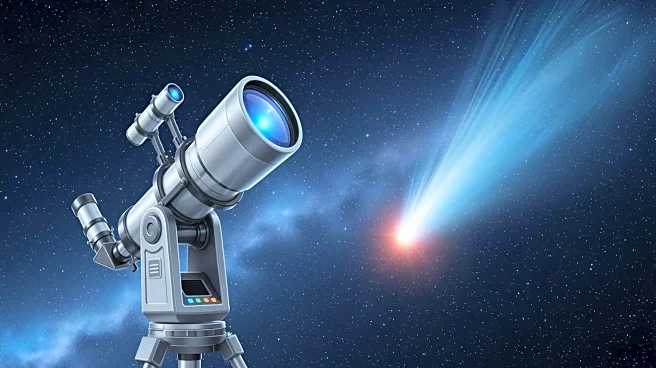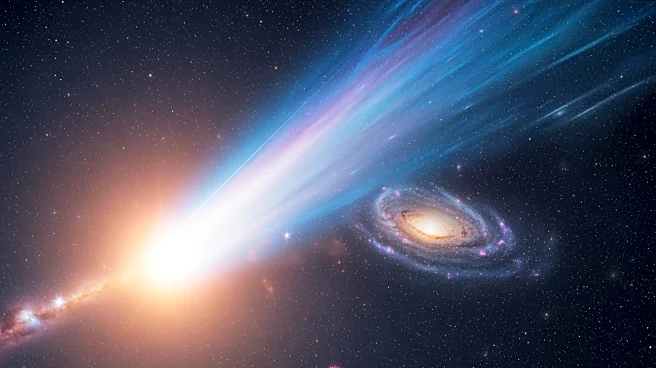What's Happening?
A newly discovered interstellar comet, 3I/ATLAS, is traversing the solar system, providing scientists with a unique opportunity to study material from beyond our solar neighborhood. This comet, only the third
known interstellar object to enter our solar system, is being closely monitored by NASA and the International Asteroid Warning Network (IAWN). The coordinated observation campaign aims to analyze the comet's composition, brightness, and trajectory. This research is crucial for refining techniques to detect and track fast-moving interstellar objects, which could enhance future planetary defense strategies. The comet will pass safely at about 1.8 astronomical units from Earth, offering a rare chance to study an object not bound by the Sun's gravity.
Why It's Important?
The study of 3I/ATLAS is significant for several reasons. It provides insights into the composition and evolution of planetary systems beyond our own, as interstellar comets carry material formed around different stars. This research could improve early-warning systems for potential near-Earth threats, as understanding the behavior of such comets helps refine methods for identifying and tracking hazardous objects. The mission acts as a test run for future space defense strategies, aligning with the United Nations' recommendations for international collaboration in protecting Earth from cosmic hazards. The involvement of citizen scientists in the observation campaign also highlights the importance of global participation in space monitoring efforts.
What's Next?
The comet will continue its journey deeper into the solar system before heading back into interstellar space between November 27, 2025, and January 27, 2026. During this period, observatories worldwide are encouraged to record astrometric data to improve computer models simulating its trajectory. This detailed tracking will help refine methods used for identifying and following near-Earth objects. The campaign also invites amateur astronomers to contribute observational data, with registration closing on November 7. Despite challenges from the US government shutdown, NASA remains committed to its asteroid and comet monitoring missions, ensuring no potential threat to Earth goes unnoticed.
